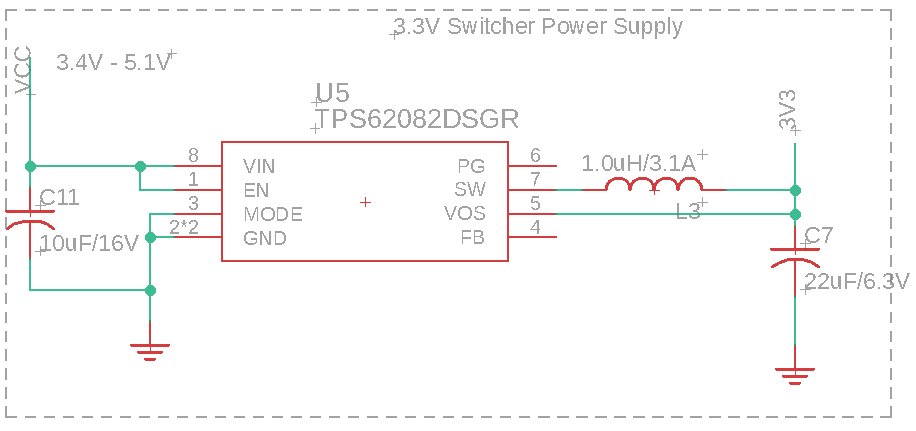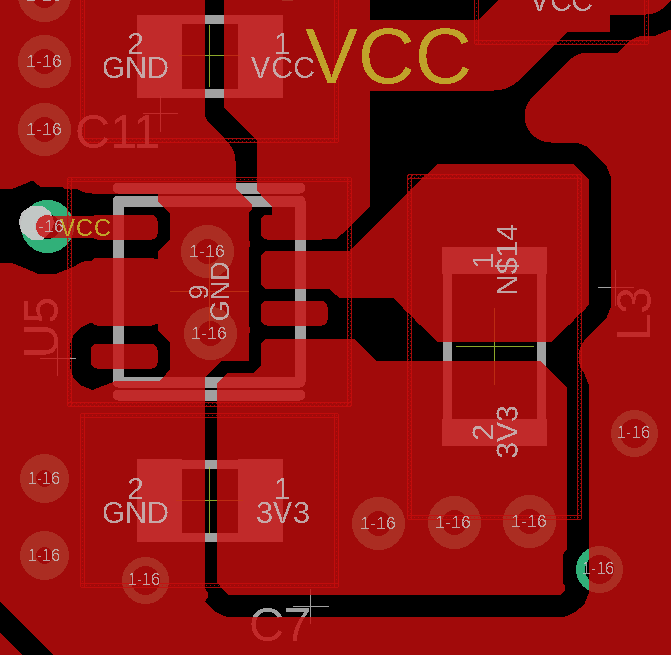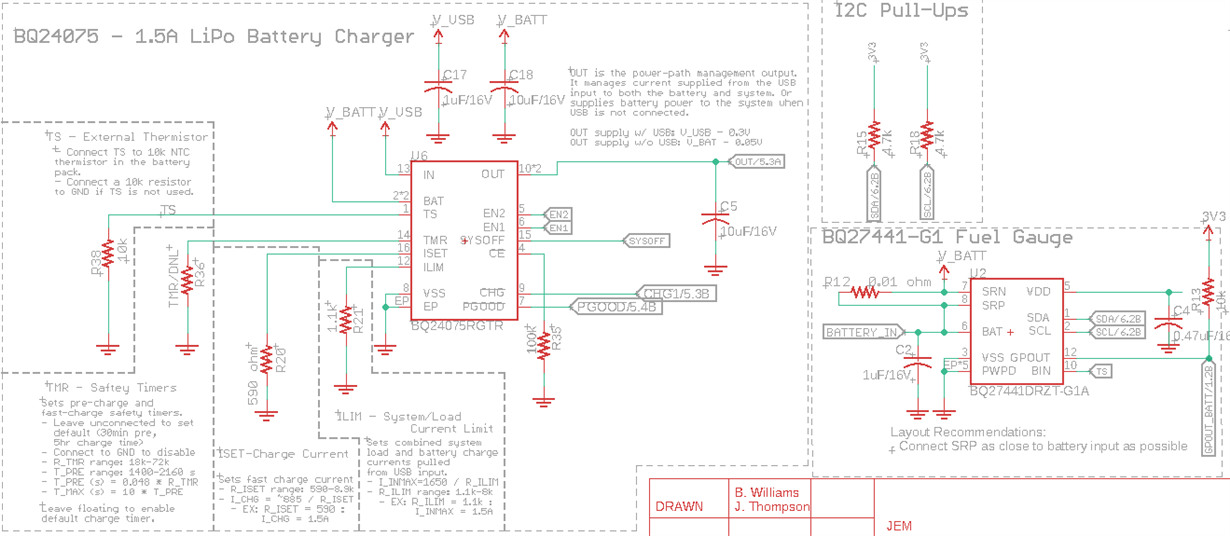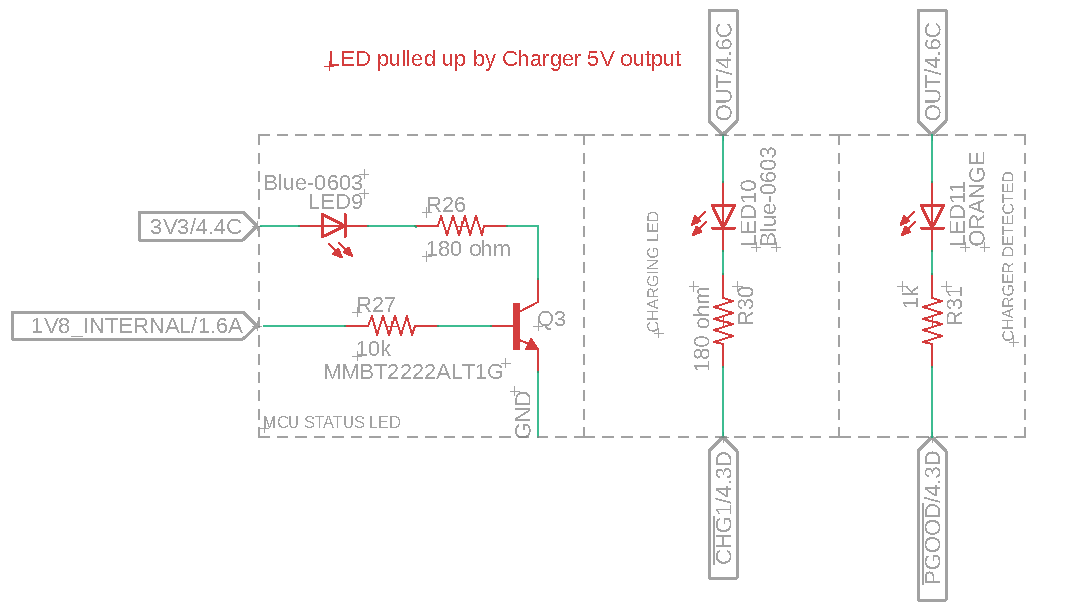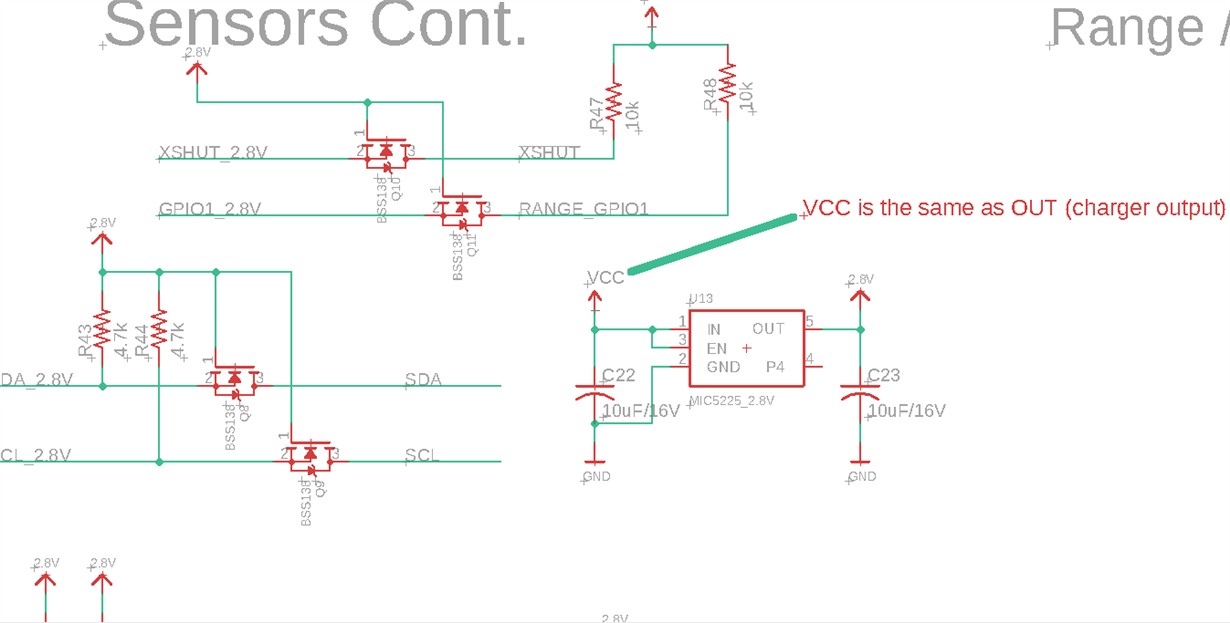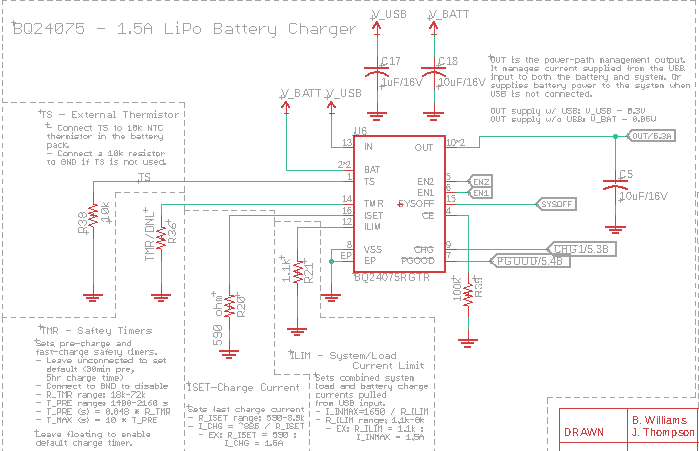Hi,
We recently started using the fixed 3.3V version of the TPS62082 (TPS62082DSG) switching regulator and are finding that the output is off by about 60 - 50 mV (3.24V instead of expected 3.3V).
We suspect that it's due to our inductor choice having a larger DC resistance, but are not completely sure.
Attached is a snapshot of our circuit and layout and listed below are the PN for the passives:
C11: GRM188R61C106KAALD
L3: DFE201210U-1R0M=P2 (95 mOhms max DC Resistance)
C7: GRM188R60J226MEA0D
Could we receive some assistance in optimizing our output to achieve 3.3V? This is a time sensitive issue and any help would be greatly appreciated.



